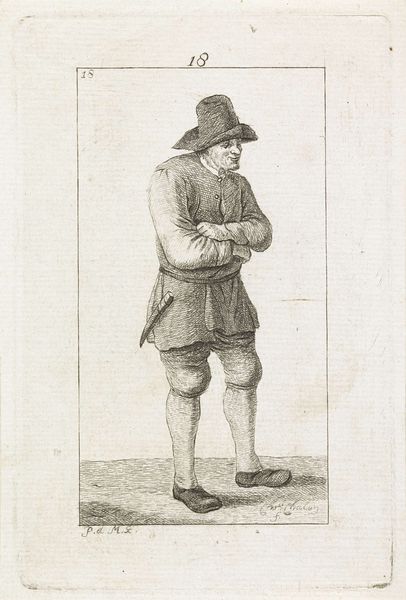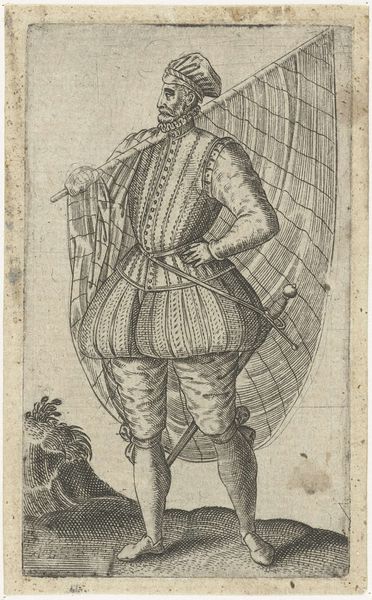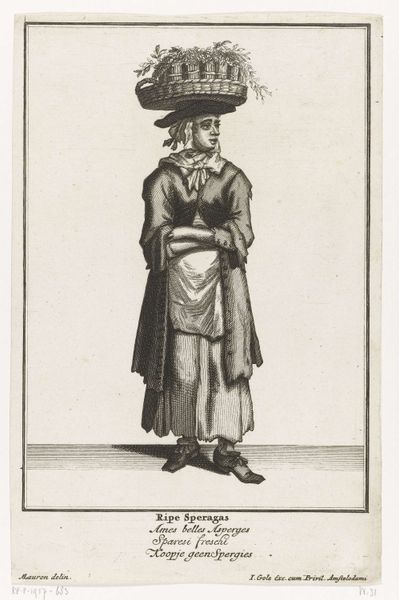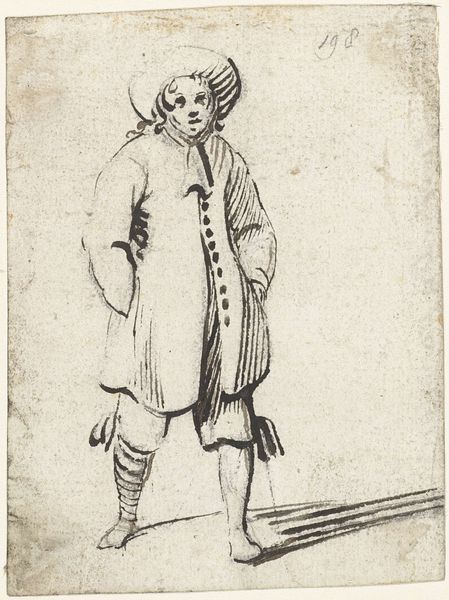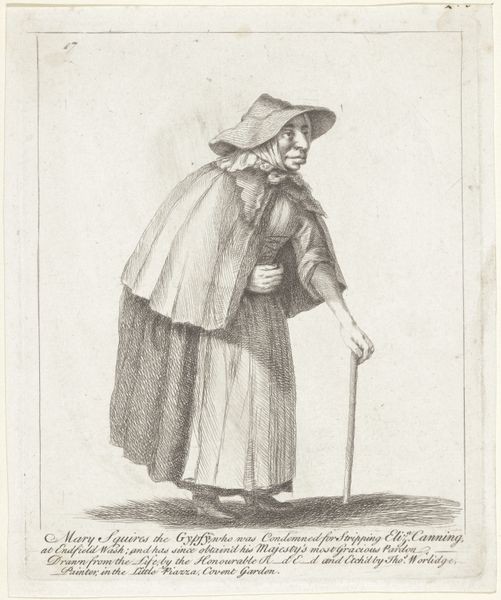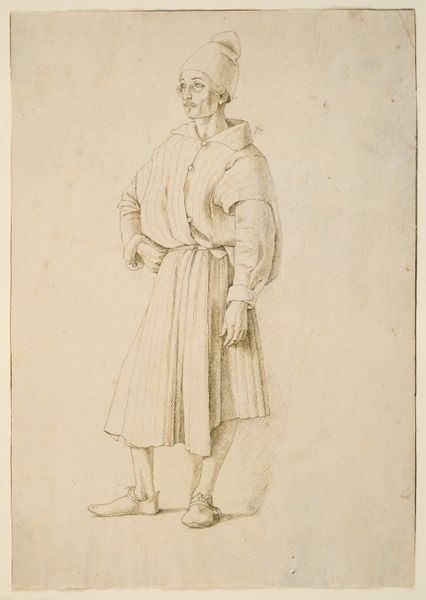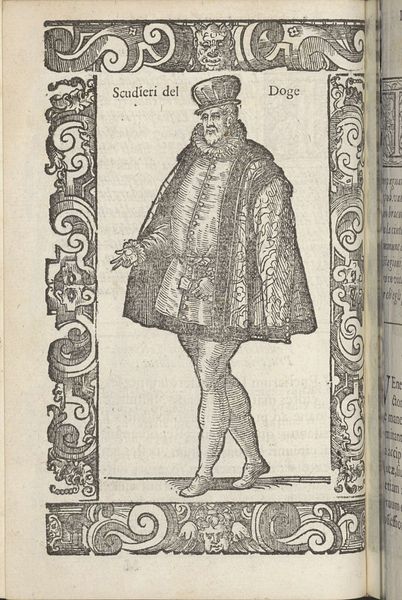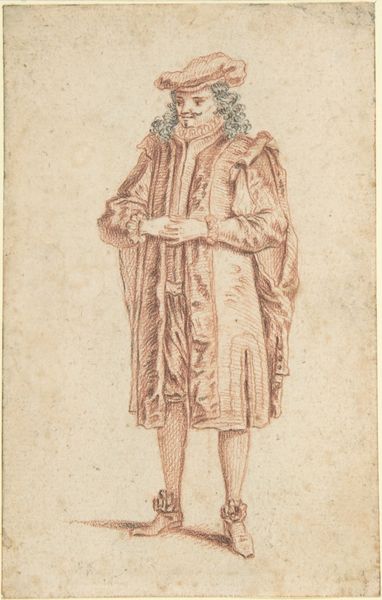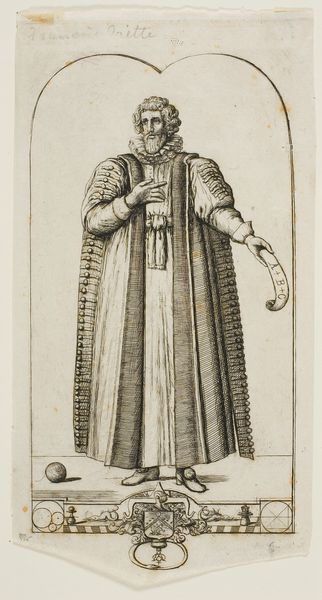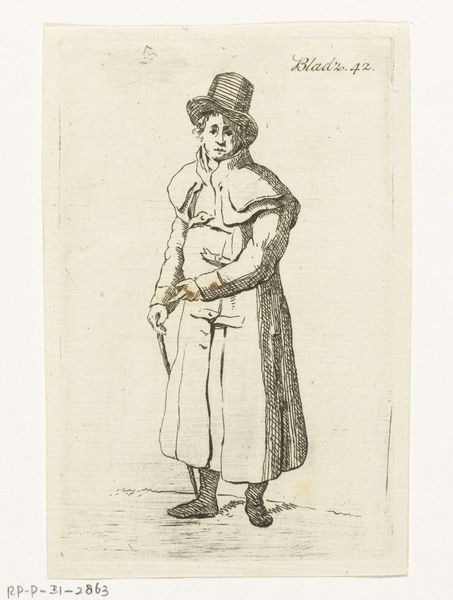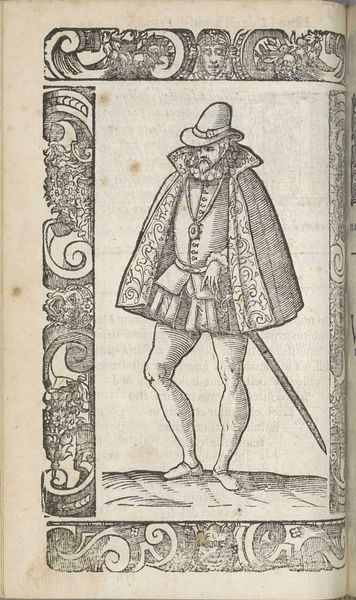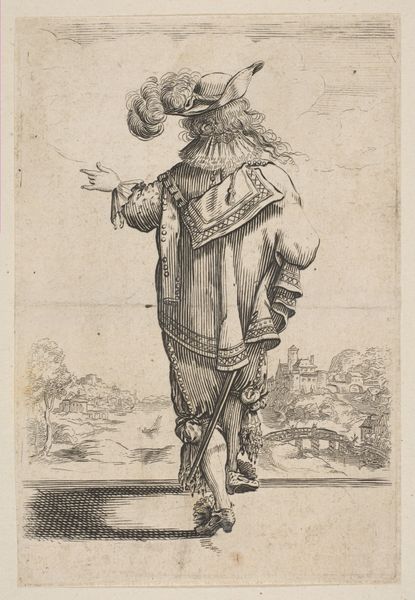
Ragusej Merchant, from 'Les quatre premiers livres des navigations et pérégrinations orientales' by Nicolas de Nicolay 1568
0:00
0:00
drawing, print, engraving
#
portrait
#
drawing
# print
#
figuration
#
11_renaissance
#
history-painting
#
engraving
Dimensions: Sheet (trimmed): 9 1/16 × 6 1/4 in. (23 × 15.8 cm)
Copyright: Public Domain
Editor: So, here we have a print from 1568, titled "Ragusej Merchant," from a book by Nicolas de Nicolay. It's an engraving, currently residing at The Met. I'm immediately struck by the man's posture. He's got this confident stance, hands on hips... what story do you think he is telling? Curator: That confidence you noticed is so key. This print is not just a portrait, but a representation of a specific identity during a time of vast cultural exchange. Nicolay's book was one of the earliest illustrated travelogues, designed to show Europeans the people and customs of the Ottoman Empire and surrounding regions. I feel like he’s posing, aware of the artist's gaze, of his role as a specimen, of the power that portrait holds in translation, in representation. What do you make of that? Editor: I never really considered that gaze—specimen—aspect before. The man’s clothes do seem exaggerated almost like they’re supposed to signify a specific status, place or something similar to that, right? I mean is he performing for us even in the 16th century? Curator: Absolutely! Consider the detail of his clothing: the fur-trimmed hat and cloak. These weren't just practical garments, but visual markers of status, origin, trade relations. The book it’s from provided detailed descriptions of such things to accompany the illustrations. I also see hints of pride and dignity. It transcends a mere anthropological study, or any supposed European view of that culture at the time. Doesn’t it feel incredibly contemporary in that respect? Editor: Yes, it does. I’m really beginning to see this not as just a static image, but an interaction frozen in time and carefully delivered to us to translate this view, this life of someone far away, but rendered ever present. I appreciate learning about the historical context. It makes me rethink the whole thing! Curator: Me too! The history around this picture brings it to life in a new, richer light.
Comments
No comments
Be the first to comment and join the conversation on the ultimate creative platform.
